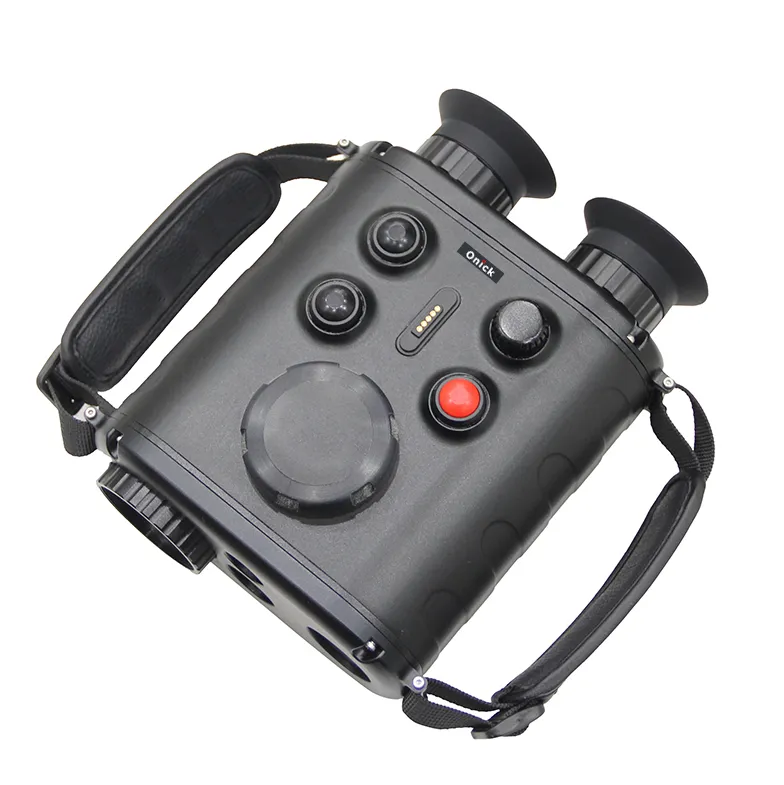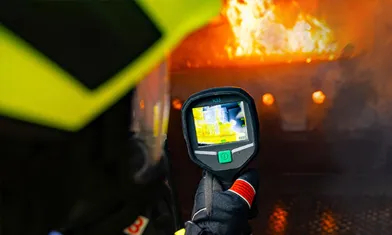Outdoor Night Vision Binoculars Help You Explore At Night
Outdoor night vision binoculars utilize infrared thermal imaging technology to clearly observe the surrounding environment in complete darkness. Their high concealment and unrestricted light levels make them a safer option for nighttime adventures. From wildlife observation to emergency search and rescue, they are redefining exploration in the dark.
Good visibility is crucial for both safety and efficiency during nighttime outdoor adventures. Traditional lighting tools like flashlights provide light, but they can easily reveal your position and have a limited field of view. Outdoor night vision binoculars, however, utilize infrared thermal imaging technology to clearly observe the surrounding environment in complete darkness or low-light conditions, making them an ideal choice for nighttime adventures.

1. Basic Principles of Infrared Thermal Imaging Technology
Infrared thermal imaging technology detects infrared radiation emitted by objects and converts it into a visible image. All objects with a temperature above zero degrees Celsius emit infrared radiation. Night vision binoculars capture this signal and process it to produce a grayscale or false-color image. Unlike low-light-level night vision devices that rely on ambient light, infrared thermal imaging requires no external light source and can penetrate obstructions such as smoke and mist, making it more widely applicable. Take Onick Optics as an example. Its independently developed infrared chip technology has reduced costs and enabled mass production, making high-performance devices increasingly common. Initially used in the military and industrial sectors, this technology has now expanded into the civilian market, providing reliable tools for outdoor enthusiasts.
2. Core Functions of Outdoor Night Vision Binoculars
-All-Weather Observation: Unrestricted by lighting conditions, it can be used in dense forests, caves, rainy, and foggy environments.
-High Concealment: Passively receives infrared signals and does not actively emit light, avoiding disturbing animals or revealing its whereabouts.
-Distance Identification: Some models support distance measurement, helping to determine the approximate distance to obstacles or targets.
-Long-Lasting Battery Life: Its low-power design allows for hours of continuous operation on a single charge, making it suitable for extended adventures.

3. How to Choose the Right Night Vision Binoculars
Consider the following factors when purchasing:
-Resolution and Refresh Rate: High resolution provides clearer images, while high refresh rates are suitable for observing moving targets.
-Detection Range: The range depends on your needs. For general outdoor activities, a detection range of 200-500 meters is generally sufficient. - Portability: A lightweight design makes it easy to carry, but a balance must be struck between performance and size.
- Environmental Adaptability: Waterproof and dustproof features are particularly important in complex terrain.
Onick Optics' products cover a wide range of scenarios, and its outdoor series balances performance and cost-effectiveness. For example, some models feature a 384×288 infrared resolution and weigh less than 500 grams, making them suitable for backpacking.
4. Practical Application Scenarios
- Wildlife Observation: When observing animals at night, avoid strong light that disrupts their natural behavior.
- Hiking and Camping: Identify terrain in moonless environments and detect potential hazards such as cliffs or swamps.
- Search and Rescue: Assist in locating lost persons, especially in extremely low-visibility conditions.

5. Usage Precautions
- Regular Calibration: Some devices require regular calibration to ensure image accuracy.
- Avoid Direct Light: Although infrared devices are more resistant to strong light than low-light night vision devices, it is still necessary to avoid direct light sources such as lasers from the lens.
- Battery Management: Low temperatures may affect battery life, so it is recommended to carry a backup power supply.
6. Technological Development Trends
With advances in infrared chip technology, future devices are likely to become even more miniaturized, while image processing algorithms will be enhanced to render even finer details. Intelligent features such as target recognition and path marking may also become standard features.
The allure of nighttime exploration lies in the unknown and the challenge. Outdoor night vision binoculars use technology to overcome the limitations of human night vision. Whether amateur or professional explorers, the proper use of these tools can significantly enhance safety and experience.





















